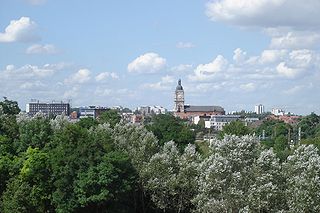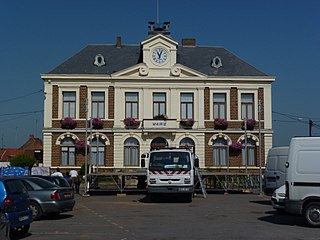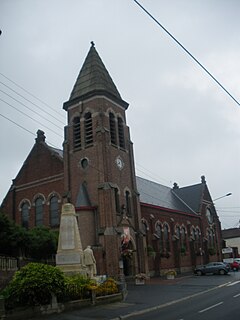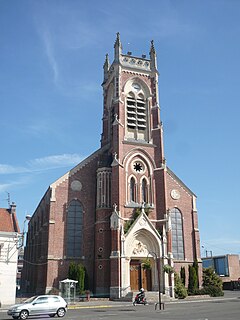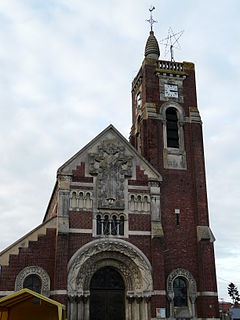Anzin | |
|---|---|
 Sainte Barbe | |
| Coordinates: 50°22′20″N3°30′18″E / 50.3722°N 3.505°E Coordinates: 50°22′20″N3°30′18″E / 50.3722°N 3.505°E | |
| Country | France |
| Region | Hauts-de-France |
| Department | Nord |
| Arrondissement | Valenciennes |
| Canton | Anzin |
| Intercommunality | CA Valenciennes Métropole |
| Government | |
| • Mayor (2020–2026) | Pierre-Michel Bernard [1] |
| Area 1 | 3.64 km2 (1.41 sq mi) |
| Population | 13,329 |
| • Density | 3,700/km2 (9,500/sq mi) |
| Time zone | UTC+01:00 (CET) |
| • Summer (DST) | UTC+02:00 (CEST) |
| INSEE/Postal code | 59014 /59410 |
| Elevation | 18–95 m (59–312 ft) (avg. 15 m or 49 ft) |
| 1 French Land Register data, which excludes lakes, ponds, glaciers > 1 km2 (0.386 sq mi or 247 acres) and river estuaries. | |
Anzin is a commune in the Nord department in northern France. [3] It lies on the Scheldt, 2.4 kilometres (1+1⁄2 mi) northwest of Valenciennes, of which it is a suburb.




